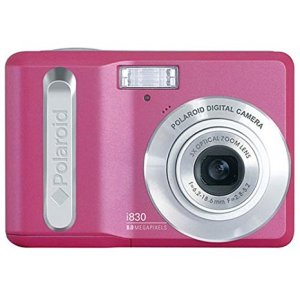I’ve always been passionate about taking photos.
My dad bought me my first camera, some type of Nikon point-and-shoot, when I was 12 – after a year of use, I got sand in the lens and it became unusable. At 13, I saved up my allowance for three months to purchase a bright pink Polaroid i830 with 8MP and 3x zoom. IT WAS SO CUTE, I wish I still had it. Unfortunately, I’m really hard on things, RIP.

The death of my Pink Polaroid meant that, as a broke 13-year-old (whose parents didn’t buy her nice things because she ruined them), I wouldn’t have a camera for a while. Eventually, I got an iPhone 4 and rediscovered how much I loved taking photos. But I figured I didn’t need a camera, since my phone had one built-in already.
21st Century, right? I was satisfied.
With each opportunity to upgrade my phone, I always opted for the device with the best camera – my top priority. Since I’d had a phone capable enough to take great photos, I no longer felt the void of not having a digital camera.
I activated my Instagram account in 2010, and my first photo was a crop of shotgun shells with the toes of my cowgirl boots peeking into the frame of my iPhone lens. It got seventeen likes, I’ve never been much of an online sensation. Although I kept taking photos, my Instagram dried up. I didn’t become an active user of The Gram until 2016 when Facebook started becoming very political.
I began following many talented photographers on instagram, because I wanted to become a better model through observing other models’ techniques in front of the camera – where they put their hands and the like.
Ironically, all these observations only inspired me to get back behind a real camera of my own.
I finally pulled the trigger on my photography and invested in a bridge camera after reading an article (that I wish I could remember the name of), which actually had nothing to do with bridge cameras. In the same instant, I decided that I wanted to start out “seriously” shooting with a Fujifilm, because I’m so impressed with the colors and tones of the images that they produce.
I purchased my bridge camera – Fujifilm Finepix S4250 gently-used from Craigslist. After typing “Fujifilm” in the search bar, I found my perfect match for only $65 – I discovered later that the camera still retails for about $200, (major victory).
The S4250 features 14 Megapixels, 24X Zoom, a 24MM Wide Angle Lens, Dual Image Stabilization, pop-up Flash, Optical View Finder, and a 3.0″ LCD Screen. The photo quality is amazing. I was able to take a photo of the moon during my second week of owning the Fuji, (after purchasing a tripod). The photo came out with minimal grain for how much I had to underexpose the image to get a clear shot of the moon.
So, why do you need a bridge camera? I personally made the investment in a bridge camera for a slew of reasons. The first being that I wanted to assure myself that I’m not just an iPhone Photographer who takes average photos and thinks they’re hot shit on social media. I really do think that my photos are beyond the caliber of a regular Joe mindlessly snapping pictures at a soccer game. If that means that I think I have an eye for a good photo, then I do.
But that doesn’t mean that I don’t have a lot to learn.

I bought a bridge camera first because DSLR’s are intimidating – the price tag, the lenses, the settings – it’s a lot when you’re first starting out.
As far as I understand, bridge cameras are meant to bridge the gap between DSLR’s and point-and-shoot digitals. Working with a Bridge Camera has given me the opportunity to get a feel for an actual camera (not integrated into the back of a cellphone), for the first time in nearly ten years. I’ve had the chance to get re-acquanited with The Exposure Triangle, Composition, Histograms and camera presets.
Being a struggling student in the Greater Seattle Area, saving for a DSLR could take a significant amount of time: my bridge camera has allowed me to take quality images and learn some technique for a fraction of the cost. A DSLR can be a huge investment, and I have seen many people purchase them only to turn around and sell them at a discounted rate because they don’t use them as often as they’d like (not very invested in the hobby), they don’t understand them, or for some other variety of reasons. I would advise anyone who is an absolute beginner in photography to take the leap and purchase a bridge camera prior to a DSLR, for this reason especially.
If you’re on a budget like me and are not opposed to buying used items, don’t forget to check your local Pawn Shop(s), Facebook Market, Craigslist, and OfferUp for your camera first – it’s very possible that you’ll find a great deal like I did. Safety first – always be cautious if you decide to buy second-hand from someone that you don’t know: meet in a public place, tell a friend where and when you’re going, bring someone with you if possible. As with anything, compare used prices to make sure you’re not getting ripped off.
One major benefit of purchasing from Amazon or direct from a manufacturer is the warranty/insurance that you can get with the products.
I would also highly recommend any of the Fujifilm S Series (especially the S4250) as a bridge camera. I adore mine, and reviews I have read on the rest of the S Series thus far have been nothing but wonderful.








